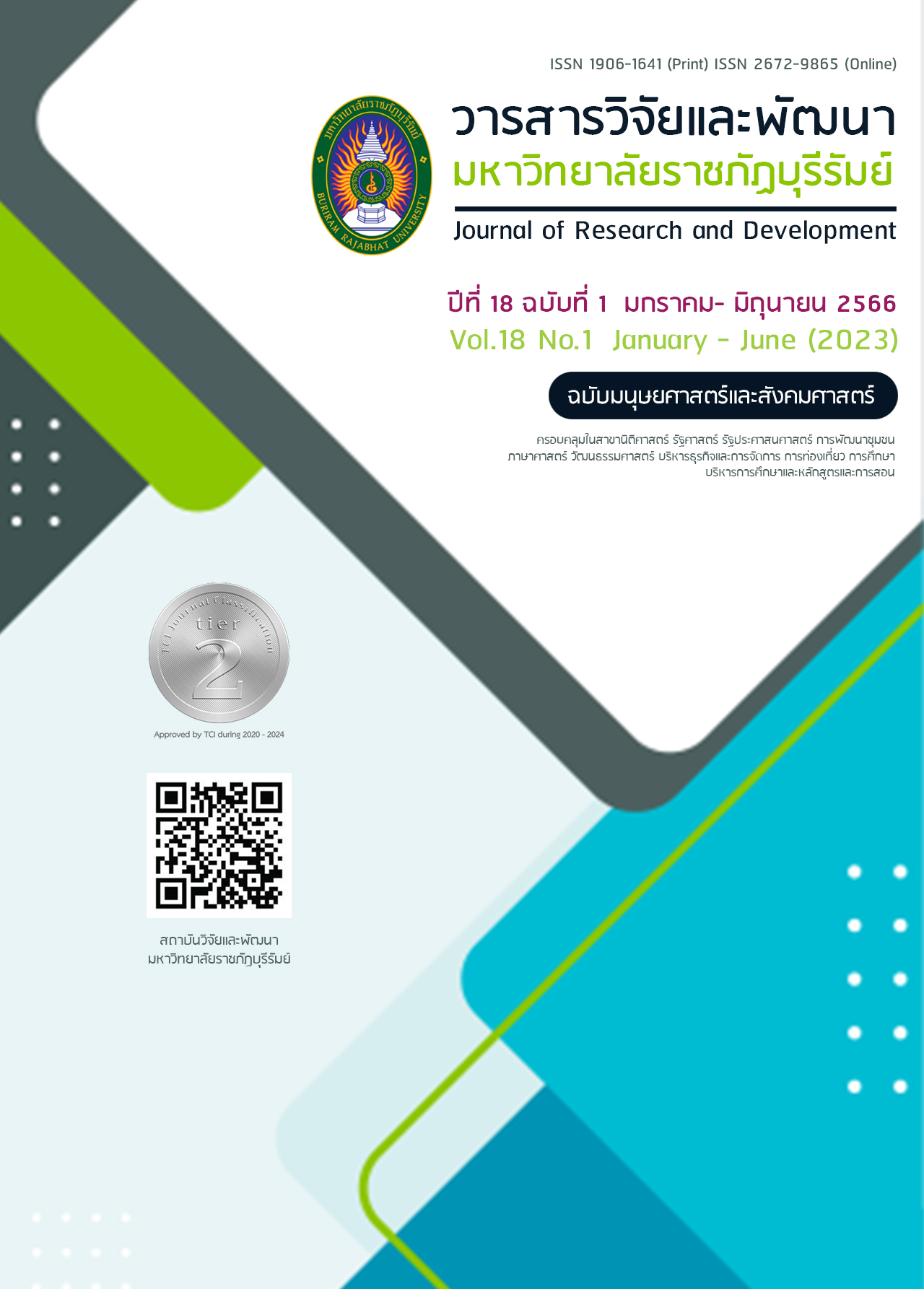Development of Learning Resources and Classroom Environment in the Special Education Center of Phetchabun Province learning resources classroom environment special education center
Main Article Content
Abstract
The research results are for 1)Study the current learning resources and desirable conditions of special education centers. Phetchabun Province 2) Design and development of learning resources 3) Evaluate the development of learning resources and classroom environment. special education center Phetchabun Province 4)Evaluate students' knowledge after receiving learning resource management skills. and the classroom environment for special education centers This sample group is Phetchabun Provincial Special Education Center. Mueang Phetchabun Service Unit Phetchabun Province and 48 students from the Department of Early Childhood Education, Faculty of Education, Phetchabun Rajabhat University were obtained by purposive sampling. The statistics used to analyze the data were mean and standard deviation and percentage.
The results showed that 1)the study of opinions towards learning resources and environment management Conducive to learning for children with special needs. Overall, it was found that 1.To develop 2 rooms, namely the intelligence room, using the concept of arrangement according to the Montessori concept and the body room. By using management guidelines to promote development in all 4 areas. 2)Design and implementation results There are processes as follows. 1. Provide training to students. 2.Analyze the needs of the environment. 3.Design a learning resource with assessment results The overall effect has the highest level (=5.00 S.D=0.00), suggesting that there should be continuous activities for the benefit of children and 4. Implementation of the environment according to the designed plan. by the satisfaction assessment results After organizing learning resources, it was found that the overall level was at the highest level (=4.97, S.D=0.04). 3) Knowledge assessment results. Satisfaction of the students found that 1. Survey results Analyze results from answering questions. Students understand more than before receiving the activity. 4) Student satisfaction assessment results after receiving activities It was found that the overall picture was at the highest level (=4.51, S.D=0.14).
Article Details

This work is licensed under a Creative Commons Attribution-NonCommercial-NoDerivatives 4.0 International License.
เนื่อหาและข้อมูลในบทความ เป็นความรับผิดชอบของผุ้แต่ง
บทความในวารสารเป็นลิขสิทธิ์ของวารสารวิจัยและพัฒนา มหาวิทยาลัยราชภัฏบุรีรัมย์
References
ทวีศักดิ์ สิริรัตน์เรขา. (2560). เด็กพิเศษ : ดูแลด้วยความรัก พัฒนาความด้วยเข้าใจ. สืบค้นจาก
http://www.happyhomeclinic.com/specialeducation.htm. วันที่ 20 กันยายน 2565.
นารีรัตน์ รักวิจิตรกุล. (2560). การพัฒนาวิชาชีพครู. วารสารศึกษาศาสตร์ มหาวิทยาลัยสารคาม,11 (1), 21-33.
เบญจวรรณ ระตา. (2551). การใช้แหล่งเรียนรู้ในการจัดการเรียนการสอน ของโรงเรียนเทศบาล
ดอก เงิน จังหวัดเชียงใหม่. การศึกษาค้นคว้าอิสระการศึกษามหาบัณฑิต. สาขาวิชาการบริหารการศึกษา. บัณฑิตวิทยาลัย : มหาวิทยาลัยเชียงใหม่.
มหาวิทยาลัยเทคโนโลยีพระจอมเกล้าธนบุรี. (2560). คู่มือการจัดการเรียนการสอน กระบวนการคิดเชิง
ออกแบบ (Design Thinking). กรุงเทพฯ: มหาวิทยาลัยเทคโนโลยีพระจอมเกล้าธนบุรี.
วีซานา อับดุลเลาะ และวุฒิชัย เนียมเทศ. (2563). การจัดสภาพแวดล้อมการเรียนรู้เพื่อส่งเสริมทักษะ
การเรียนรู้ในศตวรรษที่ 21“แนวคิด ทฤษฎี และแนวทางปฏิบัติ”วารสารมหาวิทยาลัยนราธิวาสราชนครินทร์, 7 (3), 227-246.
สำนักบริหารงานการศึกษาพิเศษ. (2558). คู่มือหลักสูตรสาหรับเด็กที่มีความต้องการจาเป็นพิเศษระยะ
แรกเริ่มของศูนย์การศึกษาพิเศษ ฉบับปรับปรุง พุทธศักราช ๒๕๕๘. กรุงเทพ. สำนักงานคณะกรรมการการศึกษาขั้นพื้นฐาน.
Billur Çakırer. (2010). A qualitative study on play corners: comparison of a semi-privatepre
reschool and a public preschool in Catalonia, Spain. Procedia Social and Behavioral Sciences, 590–594.

